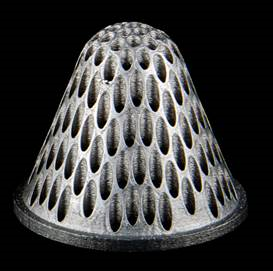
The company says it can deliver improved energy savings when compared with a conventional filter.
The Straighliner Filter offers a lower pressure drop and resistance than can be achieved using subtractive techniques. This is because, when manufactured conventionally, the holes in the perforated plate are at an angle to the filtrate flow, changing the flow characteristics and causing turbulence in the functionality of the filter.
Using additive manufacturing to build the filter holes at the same angle as the flow allows the filtrate to pass through the filter with much less resistance, resulting in both energy and cost savings


